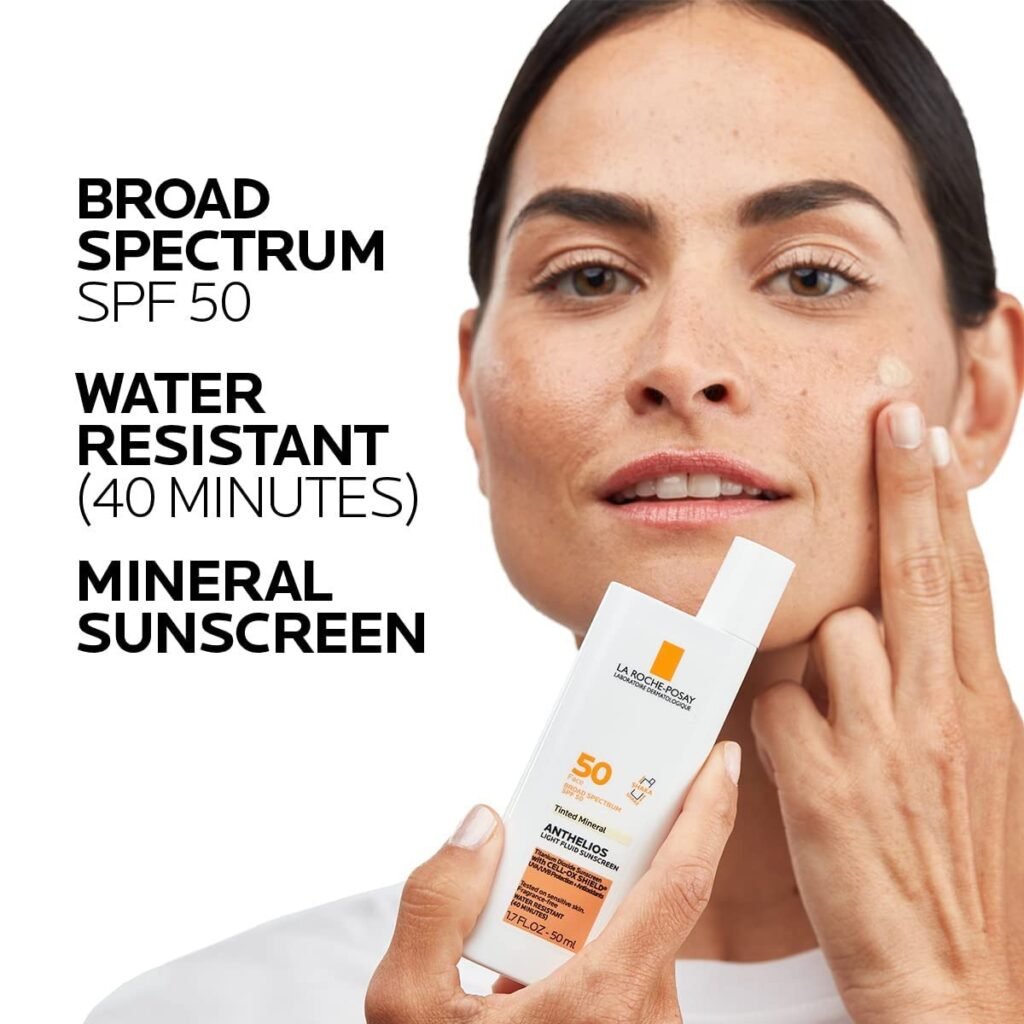Unlock a glowing complexion with Glycolic Acid skin benefits. Explore exfoliation, acne relief, and anti-aging properties for smoother skin.
Discover Glycolic Acid Skin Benefits for Radiant Skin
Glycolic acid is a powerful exfoliant, found in products with 5% to 10% concentration. It comes from sugar cane and has been a key skincare ingredient since 1974. Its small size lets it deeply penetrate the skin, improving texture, tone, and brightness.
This acid is known for many skin benefits. It rejuvenates the skin, clears pores, and lessens fine lines and wrinkles. Using glycolic acid products regularly can make your skin smoother and younger. It helps keep moisture in and gives you that glowing look. Adding this acid to your skincare can change your skin for the better, making it brighter and healthier.
Key Takeaways
- Glycolic acid is effective for almost all skin types, promoting skin rejuvenation and improving texture.
- Its chemical exfoliation property helps unclog whiteheads and blackheads, reducing pore size.
- Regular use leads to a more even skin tone, reducing hyperpigmentation and sun damage effects.
- Beginners should start with lower concentrations and gradually increase based on skin tolerance.
- Glycolic acid products should typically be applied at night, followed by sunscreen during the day.
What Is Glycolic Acid?
Glycolic acid is part of the alpha hydroxy acids (AHA) group. It’s known for its great exfoliating effects in skincare. It comes from sugar cane and helps make skin look better by improving its texture and tone.
This acid is special because it can easily get into the skin. Its small size lets it work deep within. This makes it great for improving skin health. Products you can buy have 5% to 10% of it, but some treatments have much more.
Doctors often suggest glycolic acid for many skin types, like oily, dry, or mixed skin. It helps make more collagen, which reduces fine lines and keeps skin looking young. Using products with glycolic acid can also lessen oil and unclog pores, helping with acne.
Experts say to start with glycolic acid a few times a week and see how your skin reacts. Be careful if your skin is sensitive, as it might be better to try lactic acid first. Knowing how glycolic acid works can help you use it to get smoother, brighter, and healthier skin.
Understanding Glycolic Acid’s Role in Skincare
Glycolic acid is key in skincare for its strong exfoliation. It’s an alpha hydroxy acid (AHA) that helps remove dead skin cells. This leaves skin looking smoother and more radiant.
Products with glycolic acid come in many forms, like cleansers, serums, and peels, pads. They’re made for different skin issues. Using glycolic acid regularly can make skin more hydrated and smooth.
It’s great for looking younger. Glycolic acid works on uneven skin tone, fine lines, and acne. Studies show it can help with acne and melasma, showing its many benefits.
Adding glycolic acid to your skincare routine can really show results. It helps renew skin and makes it look brighter. But, picking the right products and following directions is key to getting the best results safely.
Glycolic Acid Skin Benefits
Glycolic acid is a game-changer for skincare. It helps remove dead skin cells, making your skin look smoother and more radiant. This acid also keeps your skin healthy by helping it hold moisture better and making it more elastic.
Overview of Skin Health Improvement
Using glycolic acid in your skincare routine can greatly improve your skin’s health. It helps reduce skin flaws like acne scars and dark spots, making your skin look more even. It also speeds up cell renewal, making your skin look young and vibrant.
Key Benefits for Different Skin Types
Glycolic acid has many benefits for different skin types:
- For sensitive skin, it’s best to use lower amounts to avoid irritation. This way, you still get to enjoy its gentle exfoliating effects.
- For oily skin, using more glycolic acid can clear out pores and stop breakouts. This keeps your skin clear and fresh.
- For dry skin, glycolic acid boosts moisture levels. This makes your skin smoother and more hydrated, making it a key part of your skincare.
The Science Behind Glycolic Acid Exfoliation
The glycolic acid exfoliation science shows how this strong chemical exfoliant works deep down. Glycolic acid breaks down the bonds that hold dead skin cells together. This is key because it helps new, healthier cells come to the surface. As a result, the skin looks smoother and brighter.
This exfoliation does more than just remove dead skin; it also boosts collagen production. More collagen means skin gets firmer and more elastic. This helps skin look younger.
Using glycolic acid regularly helps skin cells turn over faster. This makes skin look less dull and more even. Studies show it can help with acne and melasma too. Its effects on exfoliation and collagen make it vital for many skincare routines.
| Benefit | Explanation |
|---|---|
| Promotes Cellular Renewal | Enhances skin health by facilitating the shedding of dead skin cells. |
| Increases Collagen Production | Strengthens skin structure, reducing signs of aging. |
| Improves Skin Texture | Leads to smoother, more even skin surface. |
| Treats Skin Conditions | Effective in addressing acne, melasma, and post-inflammatory hyperpigmentation. |
Understanding glycolic acid as a chemical exfoliant helps us see its role in skin care. It’s key for skin renewal. Its benefits lead to healthier, more glowing skin.
How Glycolic Acid Improves Skin Texture
Glycolic acid is a top choice among alpha hydroxy acids (AHAs) for its deep skin penetration. Its small size lets it work deeply, offering big glycolic acid texture benefits. It breaks down dead skin cells, making the skin smoother.
Adding glycolic acid to your daily skincare routine can make your skin look better. It helps with rough skin, big pores, and uneven color. People often see fewer fine lines and signs of aging, making their skin look younger and brighter.
You can find glycolic acid in many products like cleansers, toners, and serums. These products come in different strengths, making them safe for most skin types. If you’re new to glycolic acid, start with a 5% concentration for gentle results.
| Glycolic Acid Concentration | Usage Recommendations | Expected Benefits |
|---|---|---|
| 3% – 5% | Suitable for beginners; daily use. | Improved softness; reduced roughness. |
| 10% – 15% | For experienced users; apply every few days. | Increased smoothness; refined pores. |
| 40% – 70% | Professional treatments only; occasional peels. | Significant texture improvement; targets deeper issues. |
Using glycolic acid regularly can greatly improve your skin’s texture. It leads to healthier, smoother, and more even skin over time.
Glycolic Acid for Acne Treatment
Glycolic acid is now a key part of fighting acne. It deeply cleans pores, removing oil and debris that can cause breakouts. This helps clear skin and heal acne spots.
Mechanism of Action for Acne Relief
Glycolic acid has antibacterial and antioxidant properties. It’s safe for most skin types, with concentrations from 1 to 10 percent. These levels adjust the skin’s pH and help deeper penetration for stronger solutions.
Targeting Blackheads and Whiteheads
Glycolic acid is great for blackheads and whiteheads. It unclogs pores and reduces future breakouts. Regular use improves skin clarity and makes skin smoother.
| Concentration | Impact on Skin | Recommended Frequency |
|---|---|---|
| 1% to 10% | Gentle exfoliation, suitable for sensitive skin | 1-2 times per week, gradually increasing |
| 10% to 20% | Deeper penetration, effective for persistent acne | 2-3 times per week, based on tolerance |
| 30% and higher (medical grade) | Improves acne and scarring, requires professional supervision | As needed, typically in clinical settings |
Start with lower concentrations and increase as your skin gets used to it. Always talk to a dermatologist to find the right treatment for you. Adding glycolic acid to your skincare can make a big difference in your skin’s health.
Glycolic Acid Anti-Aging Properties
Glycolic acid is known for its amazing anti-aging effects. It helps stimulate collagen production. This alpha-hydroxy acid (AHA) makes skin look younger and feel smoother. As we age, our skin loses collagen. Using glycolic acid can help fight the signs of aging.
Collagen Stimulation for Youthful Skin
Glycolic acid is great at boosting collagen levels. More collagen means skin stays elastic and firm. Regular use of glycolic acid can make skin look younger by reducing sagging and improving definition. People often feel their skin is more alive and strong after using it.
Reducing Fine Lines and Wrinkles
Glycolic acid is key in lessening fine lines and wrinkles. It exfoliates the skin, removing dead cells to reveal new skin. By making more collagen, it makes fine lines less visible, reducing wrinkles. Those who use glycolic acid often see their skin looking smoother and plumper.
Brightening Effects of Glycolic Acid
Glycolic acid is a powerful ingredient known for its ability to brighten the skin. It’s great for those looking to get rid of dark spots like melasma and sunspots. This acid goes deep into the skin, helping to fade these marks and boost collagen production. Collagen is key for making the skin look more radiant.
If your skin looks dull, adding glycolic acid to your skincare routine can make a big difference. It helps even out your skin tone, making it look more vibrant. Using products with this acid regularly can show off smoother, fresher skin.
Starting with a low concentration of glycolic acid is best if you’re new to it. Gradually increase the amount as your skin gets used to it. Being consistent is key, as it may take some time to see the brightening effects. Start with using it once or twice a week to avoid irritation, especially if your skin is sensitive.
Incorporating Glycolic Acid into Your Skincare Routine
Adding glycolic acid to your skincare can greatly improve your skin’s health. This exfoliant helps remove dead skin cells, making your skin look smoother, clearer, and more even. It’s important to pick the right glycolic acid products for your skin type and needs.
Choosing the Right Products
There are various forms of glycolic acid products, like cleansers, toners, serums, and masks. Each type has a different level of glycolic acid:
- Cleansers: These have a lower concentration of glycolic acid, about 8–10%. They’re great for daily use and a good way to start with glycolic acid.
- Toners: They also have 8–10% glycolic acid and are perfect for everyday use after washing your face. A budget-friendly choice is The Ordinary’s Glycolic Acid 7% Toning Solution.
- Masks: Masks can have higher concentrations, up to 30%. Use them once a week to avoid irritation.
For new users, start with lower concentrations, 5% to 10%, to see how your skin reacts.
Effective Application Techniques
Using glycolic acid correctly is key to getting the best results. Here are some tips for applying it:
- Start with a clean, dry face.
- Put a thin layer of the product on and let it soak in before adding more products.
- Begin using glycolic acid at night to reduce irritation. Always use sunscreen during the day to protect your skin.
Using glycolic acid with hyaluronic acid is good because it keeps your skin moisturized. Watch how your skin reacts and adjust how often you use it. Look for products like Thom Elzner Complexion Treatment Pads or Caudalie’s Glycolic Peel Mask for specific needs.
Hydration and Glycolic Acid: A Perfect Pair
Understanding the link between glycolic acid and hydration is key to great skin. Glycolic acid is loved for its many benefits, like glycolic acid hydration. This helps keep skin looking young and fresh. It’s a natural humectant that pulls moisture to the skin, making it a solid base for skincare.
Using moisturizing with glycolic acid boosts its effects. After applying glycolic acid, a good moisturizer helps keep the moisture in. This combo is great for those wanting to get the most out of glycolic acid while keeping skin hydrated.
Here’s how hydration matters with glycolic acid:
| Product Type | Benefits | Recommended Use |
|---|---|---|
| Glycolic Acid | Exfoliates, boosts collagen, brightens skin | Apply at night to minimize irritation |
| Hyaluronic Acid | Hydrates, locks in moisture | Apply after glycolic acid for optimal skincare hydration |
| Moisturizer | Nourishes, restores skin barrier | Use after glycolic acid for enhanced hydration |
Adding skincare hydration steps with glycolic acid makes it work better and lowers irritation risk. As skin gets more sensitive to the environment, staying hydrated is crucial. These steps lead to healthier, glowing skin.
Side Effects and Considerations When Using Glycolic Acid
Glycolic acid is a key ingredient in skincare, known for its ability to exfoliate. While it offers many benefits, it’s important to know about glycolic acid side effects. These can include dryness, redness, burning, itching, and swelling. If you have sensitive skin, you might notice these effects more.
It’s best to slowly add this acid to your skincare routine. This way, you can see how your skin reacts. Always take precautions to be safe.
Another thing to remember is that glycolic acid makes your skin more sensitive to the sun. Studies show it can increase the risk of UV damage. So, always use sunscreen with SPF 50+ when using glycolic acid. This keeps your skin safe, following skincare safety tips.
If you’re thinking about using glycolic acid, talk to a dermatologist first. They can help adjust the amount you use based on your skin type and condition. This way, you get the most benefits with the least risk. Pregnant women and those with eczema or active infections should not use glycolic acid.
Start with products that have 1-2% glycolic acid for everyday use. If your skin can handle it, you can try stronger products later. Remember, some treatments have up to 70% glycolic acid. Taking these precautions helps you have a safe skincare routine without irritation or problems.
Conclusion
Glycolic acid is a key ingredient in skincare, known for its many benefits. It helps remove dead skin, fight acne, and reduce aging signs. It’s great for making skin look brighter and healthier.
Adding glycolic acid to your skincare routine can be a game-changer. Start with a low concentration and increase as needed. You can find it in cleansers, serums, and masks, suitable for all skin types.
Regular use of glycolic acid can transform your skin, making it look younger and smoother. Remember to use sunscreen as it can make your skin more sensitive. With this ingredient, getting and keeping radiant skin is easier for everyone.
FAQ
What is glycolic acid and how does it benefit the skin?
Glycolic acid comes from sugar cane and is an alpha hydroxy acid. It helps remove dead skin and renew skin cells. This leads to smoother skin, helps with acne, fights aging signs, and makes skin brighter.
How should I incorporate glycolic acid into my skincare routine?
Start with a low concentration if your skin is sensitive. Add it to your routine at night after cleansing. Then, moisturize and use sunscreen in the day to protect your skin.
Can glycolic acid help with acne and enlarged pores?
Yes, it goes deep into pores to clear out oil and dirt that cause breakouts. This helps stop blackheads and whiteheads, making skin clearer and healthier.
What are the anti-aging benefits of glycolic acid?
It boosts collagen production, making skin more elastic and less wrinkled. Regular use can make you look younger and give you firmer skin.
Is glycolic acid suitable for all skin types?
It works well for many skin types. If you have sensitive skin, start with a low concentration. Those with oily skin might prefer higher concentrations. Dry skin can benefit from its moisture-boosting effects.
How does glycolic acid improve skin brightness and reduce hyperpigmentation?
It helps skin cells turn over and exfoliates the surface. This reveals fresh skin and helps with dullness and uneven skin tone, making your skin look more even and bright.
Are there any side effects associated with glycolic acid?
Most people find it safe, but some might see redness, irritation, or peeling at first. Always do a patch test and be careful in the sun.
What types of products contain glycolic acid?
You can find glycolic acid in cleansers, toners, serums, creams, and peels. The right product depends on your skin type and goals.
How can I maximize the benefits of glycolic acid in my skincare routine?
Apply it to dry skin after cleansing. Follow up with a moisturizer. Always use SPF during the day to protect your skin after using glycolic acid.
Source Links
- https://www.dermstore.com/blog/top_ten/glycolic-acid-benefits/
- https://www.neostrata.com/blogs/learn-about-skincare/what-is-glycolic-acid-what-are-the-benefits-for-your-skin
- https://www.health.com/glycolic-acid-8402482
- https://www.verywellhealth.com/glycolic-acid-15774
- https://www.goodhousekeeping.com/beauty/anti-aging/a31155061/what-does-glycolic-acid-do/
- https://www.webmd.com/vitamins/ai/ingredientmono-1685/glycolic-acid
- https://www.medicalnewstoday.com/articles/glycolic-acid-for-skin
- https://www.dermstore.com/blog/top_ten/glycolic-acid-benefits/?srsltid=AfmBOopmzjfV8qd7ySCC-_RZg68aejWSWXVt60OKmL7g2sfyLjLqLBti
- https://www.theinkeylist.com/blogs/news/5-benefits-of-glycolic-acid
- https://www.ncbi.nlm.nih.gov/pmc/articles/PMC6017965/
- https://www.ncbi.nlm.nih.gov/pmc/articles/PMC3875240/
- https://www.gloskinbeauty.com/blog/glycolic-acid-smooth-skin-resolve-uneven-texture?srsltid=AfmBOopwS0vh6yiN7MTVCL7F1TirQOkMGW6LySOTsLS4ptApt9g-n_YK
- https://www.dermstore.com/blog/top_ten/glycolic-acid-benefits/?srsltid=AfmBOopdN33JytndaNo_SG6nMmzQIwUAZpFsnaxZEltNyxMTkYoV0PZp
- https://www.apostrophe.com/slather/what-does-glycolic-acid-do/
- https://www.healthline.com/health/beauty-skin-care/glycolic-acid-for-acne
- https://www.dermstore.com/blog/top_ten/glycolic-acid-benefits/?srsltid=AfmBOoqK_7aaRywLkNRmpRvZvbkemj4yM1k3zj7ebuqTD5QM-K07RwJH
- https://www.clinikally.com/blogs/news/clearing-up-acne-with-glycolic-acid-how-it-works-and-how-to-use-it?srsltid=AfmBOooSpzEoS6eI857XygAbCK6_ftBjB08XendwOrNXdHDyTy6ZdAOK
- https://www.byrdie.com/glycolic-acid-5079041
- https://www.ncbi.nlm.nih.gov/pmc/articles/PMC7891644/
- https://www.dermstore.com/blog/top_ten/glycolic-acid-benefits/?srsltid=AfmBOorExJSVKU-OJt7X1RVsaxNvxo8GBCHVlYrz0VetFuwx5Pvu6hCS
- https://www.vivantskincare.com/blogs/hyperpigmentation/6-acids-with-brightening-superpowers?srsltid=AfmBOoqDTjqrKQdW1epP_IUrJt0YLM8IQVUiuKZPms_Exa_LDeMoRv3q
- https://qrxlabs.com/blogs/skintype/can-glycolic-acid-whiten-skin-discover-the-brightening-power-of-glycolic-acid?srsltid=AfmBOoq4k_UCdfM3Spje35NGwOhS9ihatmwT8-gQgYF1O0-68Q-Xu1xF
- https://skinspanewyork.com/blogs/news/how-to-incorporate-glycolic-acid-into-your-skincare-routine?srsltid=AfmBOop3SeL5yQtJ_IpL0uHoOneU9D9lPR2d1JnNwQoQshYAju5anOm8
- https://www.clinikally.com/blogs/news/how-to-incorporate-glycolic-acid-into-your-skincare-routine?srsltid=AfmBOorcPHTjZrTjZDFyS5VPsEbO-3oI8mpF4y5YdI834urVsxlwsBx6
- https://www.neostrata.com/blogs/learn-about-skincare/how-when-to-use-glycolic-acid-in-your-skin-care-routine
- https://depology.com/blogs/news/can-i-use-glycolic-acid-everyday
- https://qrxlabs.com/blogs/skincareroutine/what-to-apply-after-glycolic-acid-a-complete-guide?srsltid=AfmBOor1KY4AQA0ZdEhcIvA8HieLvPOoLgRVDvzwrLKMbu3HUOyKJ79d
- https://patient.info/news-and-features/glycolic-acid-skincare-benefits-side-effects-and-more
- https://www.tuasaude.com/en/glycolic-acid/
- https://www.apothecarycompany.com/blogs/news/the-benefits-of-glycolic-acid-in-skincare-and-how-to-use-it-for-your-skin-type
- https://kimgalloesthetics.com/blog/glycolic-acid-vs-salicylic-acid










